The above phrase could easily be the punchline to a Norwegian joke about our neighbours in the east. Here in Norway it’s a cultural staple to tell jokes about the Swedes. Unfortunately, this also says a lot about our own inferiority complex in our relationship to them. And I’ll be the first to admit it: We’re not as cool as they are. While we all agree that they talk weird, eat horrendous food (like rotten herring) and that IKEA is just an evil plot against the world. But they’re actually annoyingly successful at almost everything.
The Swedes are both great innovators and traditionalists. They even successfully export a lot of their ideas to the rest of the world. Among others, they’ve given us Abba, Wille Sundquist, Volvo, Bluetooth and Spotify. And even dynamite! Oh, and they designed the classic Coca-Cola bottle! And us Norwegians? Well, we’re famous for killing whales, raiding and pillaging villages around the world, skiing and brown cheese. How about that!
Therefore it’s no surprise that they also did some groundbreaking scientific research on chair design. Surprisingly, I’d had never heard about this. Which is a bit weird, considering I’m a nerdy chairmaker myself and live just next door to them. Instead, it all came to me when I excavated a dusty Åkerblom Chair from a Norwegian barn earlier this summer. When I started reading about the chair, I learned it was an interesting part of chairmaking history that has been long forgotten and perhaps little known outside our Scandinavian borders.
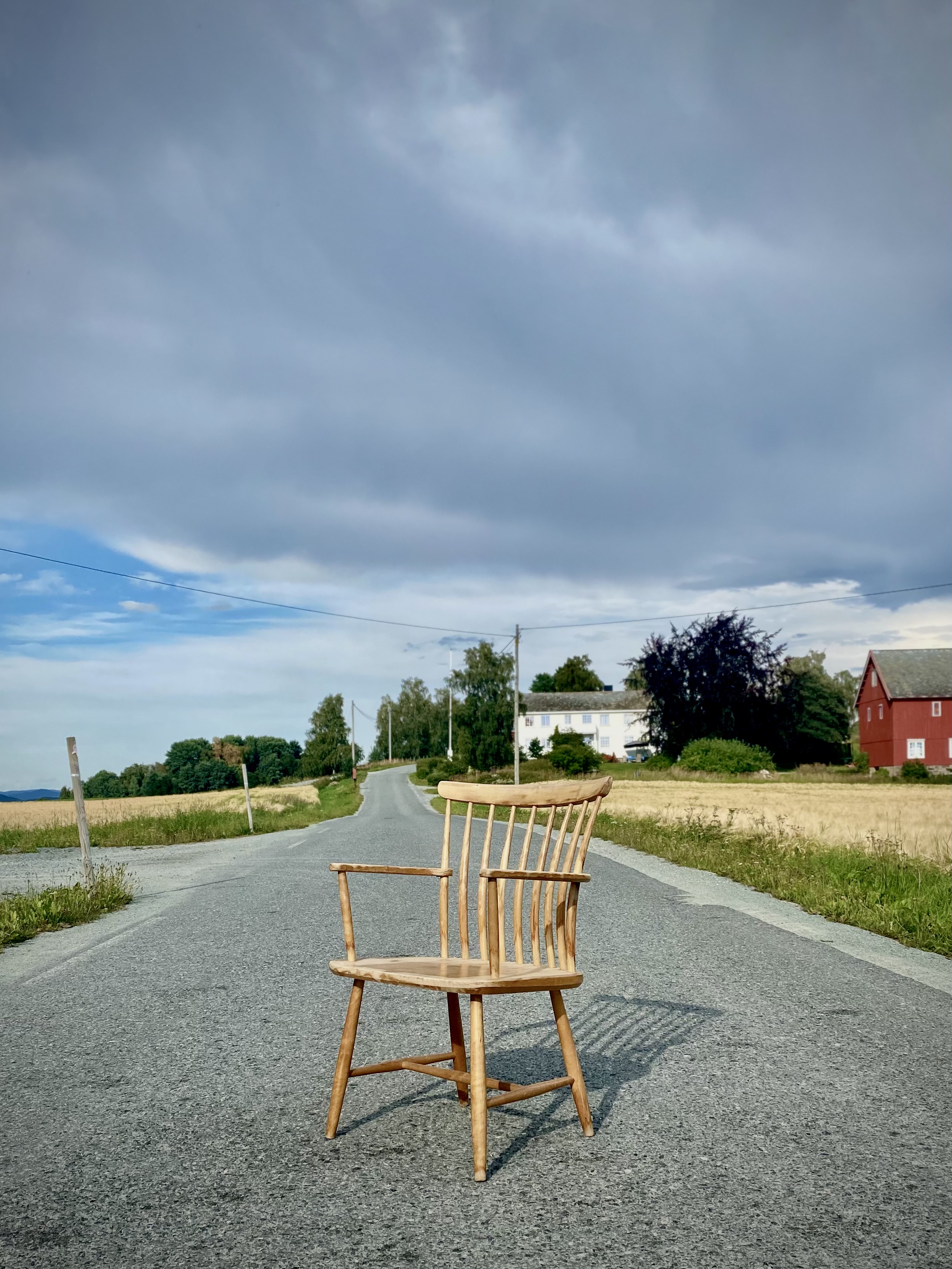
The Chair Doctor
The story starts with Bengt Åkerblom (1901-1990), a Swedish doctor who became a pioneer in the field of electromyography. This is simply put a method of studying and evaluating the muscular strain induced by different body positions and movements. It is done by measuring the electrical nerve activity in skeletal muscles. Dr. Åkerblom had a special interest in sitting postures. Through his studies, he pretty much laid the foundation for the science of modern ergonomics. In 1949 he released his 187-page long thesis called “Standing and Sitting Posture with Special Reference to the Construction of Chairs.” It was also sold as a hardcover book.

The Journal of the American Medical Association from Nov. 1949, announcing Dr. Åkerblom’s new study. 
Åkerblom’s thesis, hard bound as a book.
Bengt Åkerblom’s goal was to scientifically prove that a chair could be designed to minimize muscular strain and discomfort. In other words: to become the most comfortable chair possible. The main findings of the study were:
- The position and shape of the backrest, which is applied to the weakest part of the spine
- The importance of the height of the chair seat from the floor
- The slope (also called the tilt) of the seat
- The seat must allow for the sitter to move around and change between positions
He came to his conclusions through both lab experiments and observational studies of people using chairs in daily routines and work life. He found that chairs formed to mimic the human body usually gave no or too-little support to the lumbar spine. In other cases, the supporting area of the chair back was too high up. Åkerblom also proved that the seat would have to tilt the sitter backwards in order for the back rest to function properly. He also found that a chair seat that was too high above the floor would induce pressure on the underside of the sitter’s thighs. This would impair blood flow to the legs and result in fatigue and discomfort. Lastly, a pommel-less seat with only a shallow saddling to it would let the sitter easily shift position, which increases the sitter’s comfort over time.
It Takes Two to Tango
In 1931, another Swede, Gunnar Eklöf from Stockholm, graduated as an interior architect. After working for a lamp factory and some furniture makers for a few years, he was offered a job as a furniture and interior designer at Karolinska University Hospital in 1936. This is where his life took a turn.
During his work at the hospital he developed an interest in ergonomics. Although I have not been able to find out how, he must have met Dr. Åkerblom during this time. Immediately after the war, Åkerblom was finishing his thesis at the Karolinska University Hospital and was probably keen to try out his theories in real life. However he was a scientist, not a chairmaker. One can only imagine it must have been love at first sight between Åkerblom and Eklöf.
And so Gunnar Eklöf designed a simple stick chair based on Åkerblom’s findings. As you can see from the protoype drawing below, all of the main principles have been incorporated: The low seat (15-3/4″ above the floor), the 6° seat slope and the star of the show – the bent back sticks providing lumbar support at 6-1/2″ above the seat. The seat is almost flat and has a very subtle saddling, allowing the sitter to easily shift her weight.
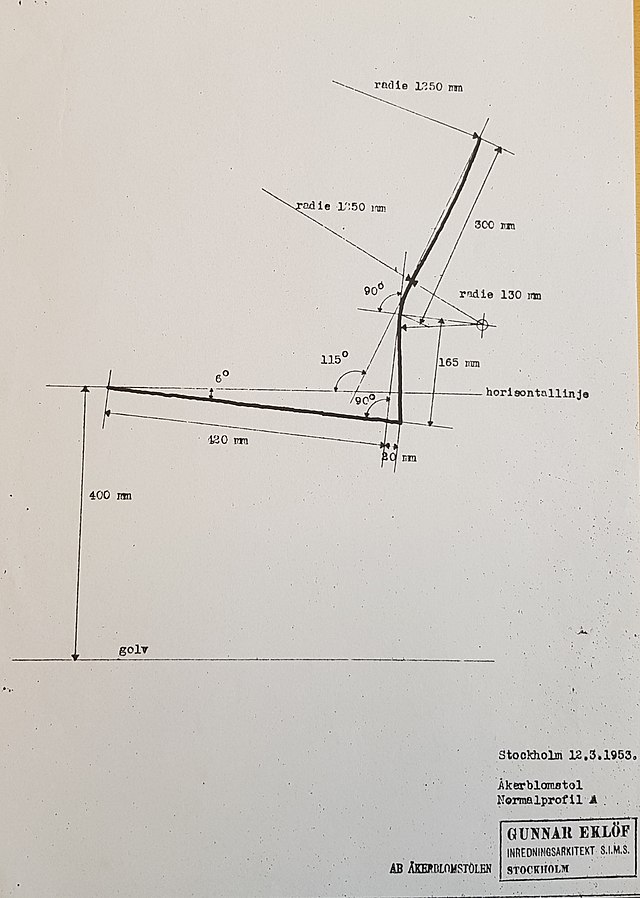
Bringing it to the Masses
Neither Åkerblom or Eklöf were chairmakers. They needed help to bring the chair into life and about 1950 they contacted the Nässjö Chair Factory to manufacture the conceptual chair. The Åkerblom Chair required exact engineering, including steam-bending. At this time, the Nässjö Chair Factory was already one of the largest chair factories in the Nordic countries. Nässjö had started producing stick chairs and rocking chairs in 1870, so by the time they were contacted by the two young designers, they already had 80 years of experience under their belt.
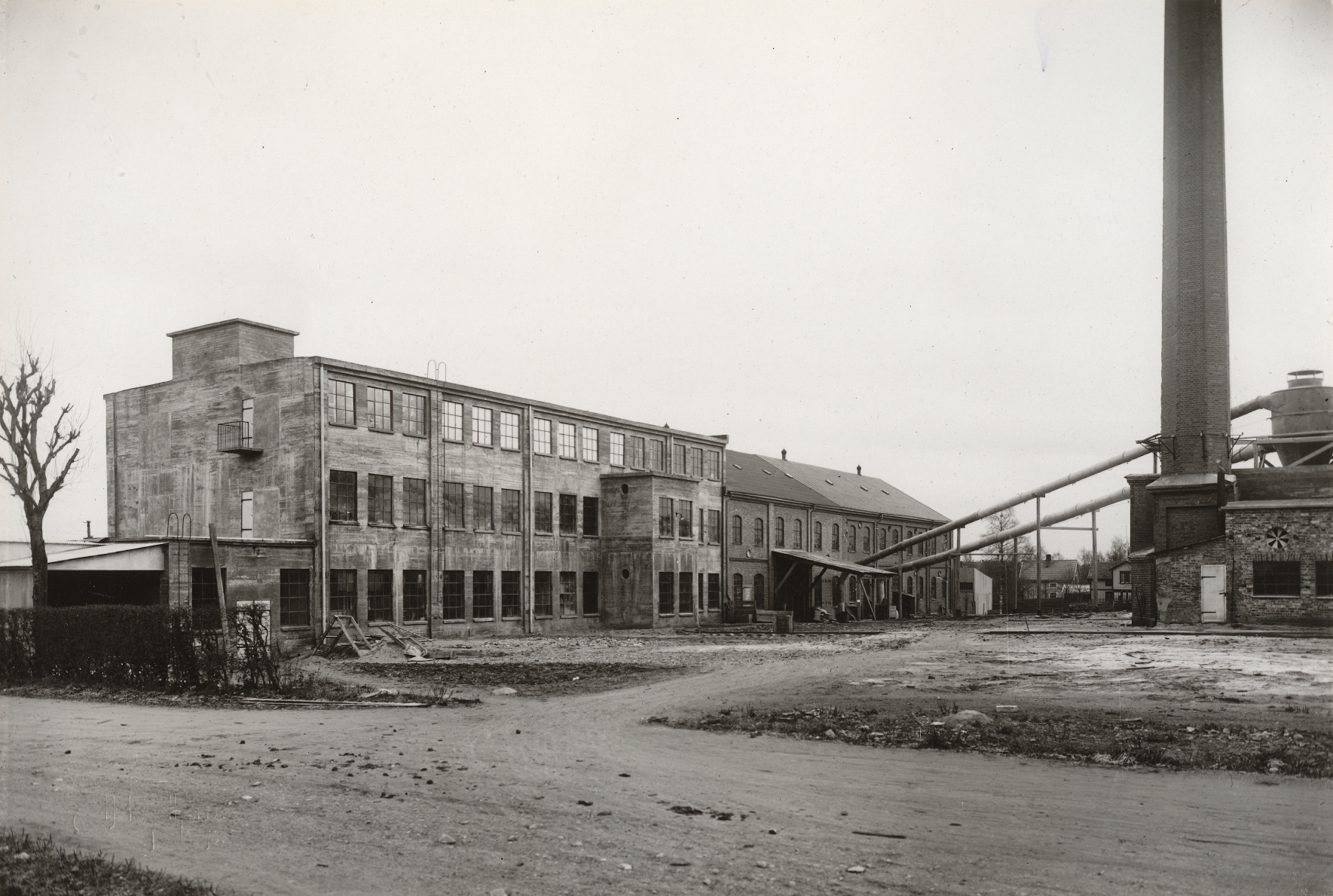
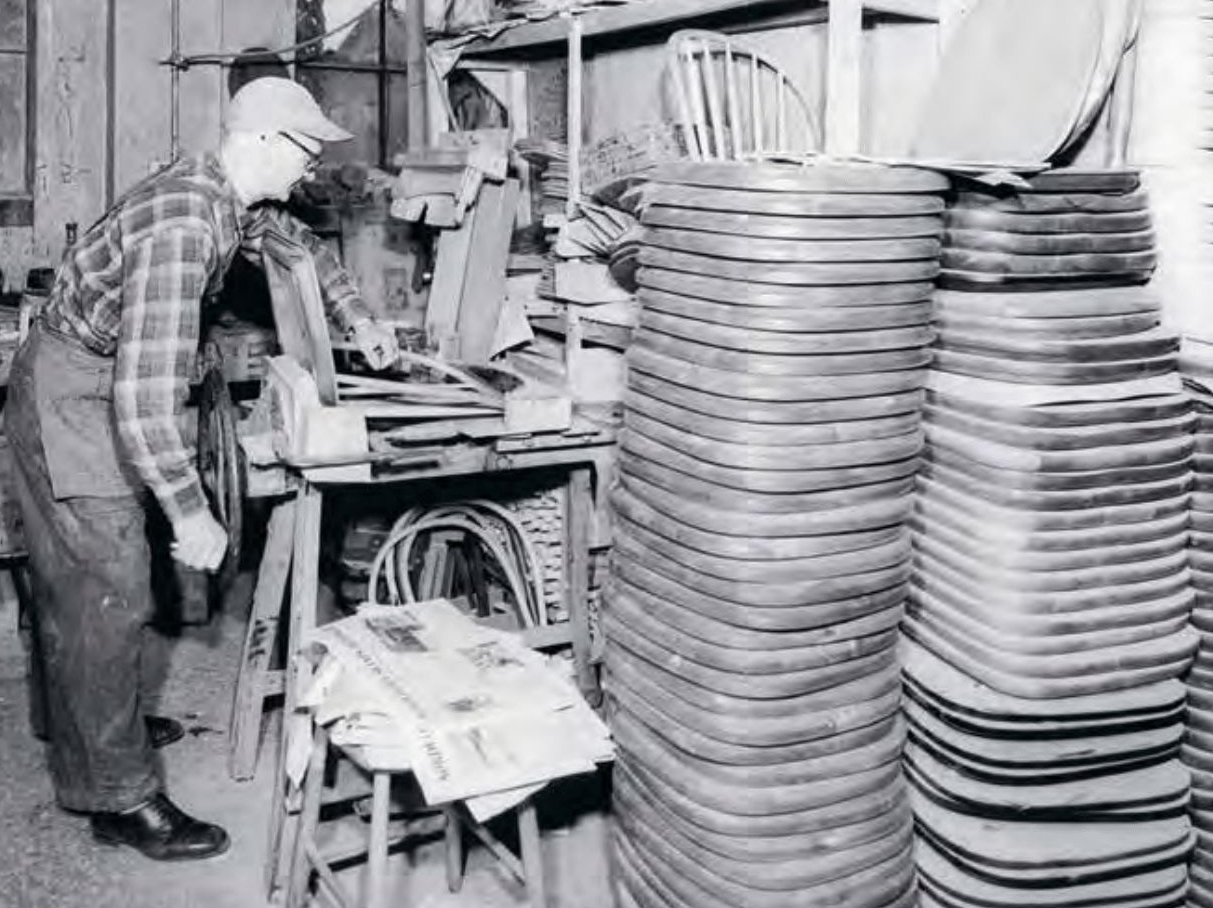
During the years 1949 to 1958, more than 120,000 Åkerblom Chairs were produced and sold. All were made from solid Swedish birch and had the same conceptual features. Gunnar Eklöf designed several variants of the chair, including side chairs, dining chairs and arm chairs. The most popular model was the “SZ03,” a light and elegant armless stick chair that had all of Åkerblom’s ergonomics baked into the design.
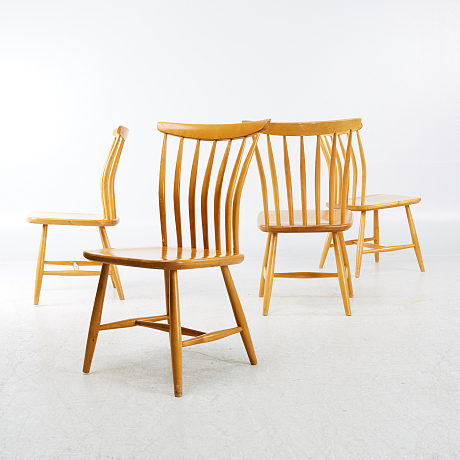
The best selling SZ03 Åkerblom Dining Chair 
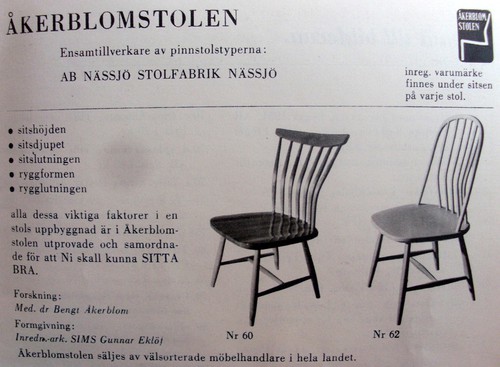
The one I found in the barn however, was the Åkerblom Karmstolen – the armchair version of The Åkerblom Chair. It features a so-called “captured arm,” where the outer back sticks are mortised through the back part of the armrests. This is a common arm joint, but it is most common in old Irish stick chairs. The armchair is made from both solid and laminated birch. The seat is glued up from several pieces of solid wood. All of The Åkerblom Chairs had a maker’s mark under the seat to prove their authenticity.
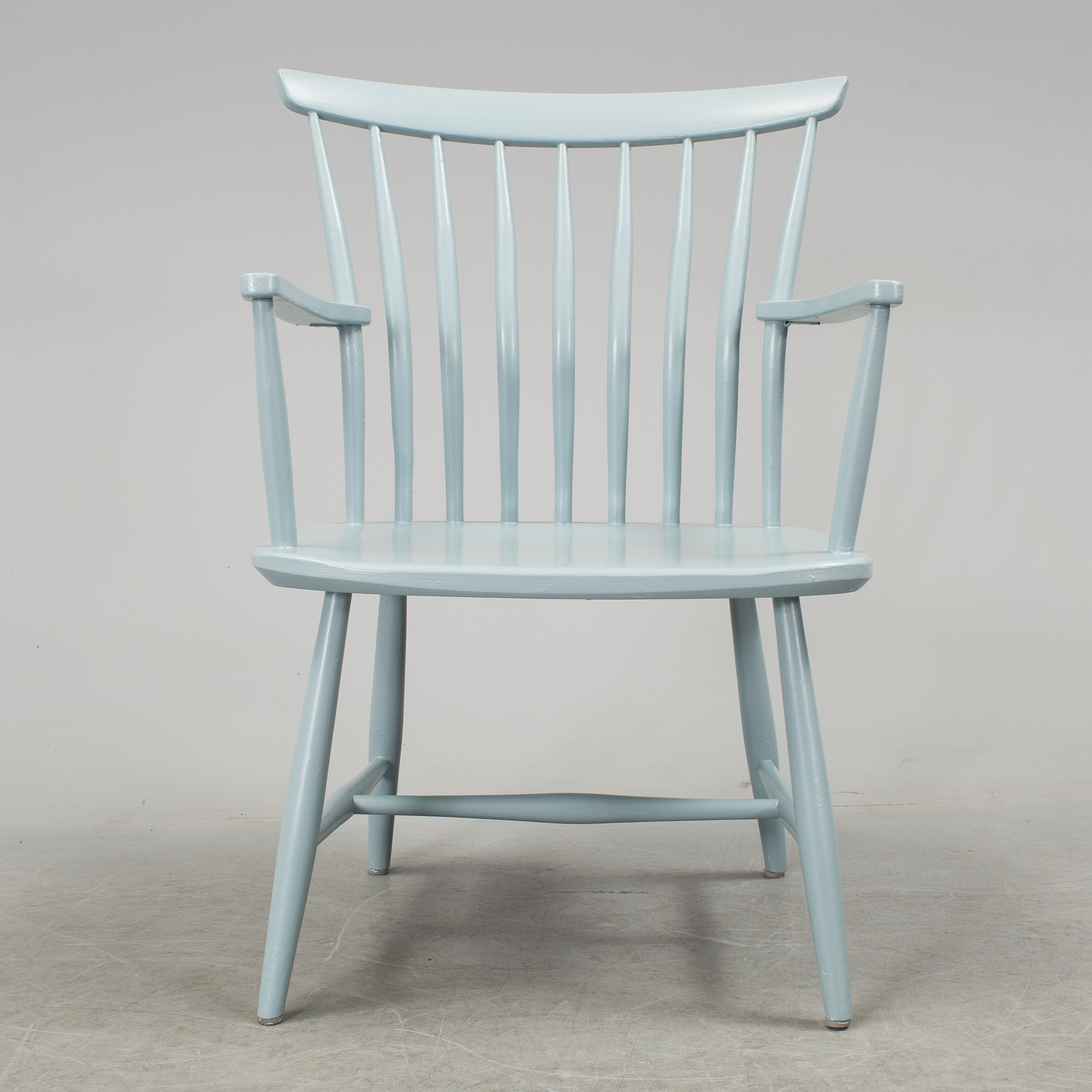
So, How Does it Sit?
I’m pretty sure Dr. Åkerblom meant for his sitters to be upright and working at a desk. I’m not a desk guy, and I usually sit like a sack of potatoes. So I figured I’d put the chair to a test and sit like an office worker. And let me tell ya, it was dang comfortable. I almost felt like having a Swedish meatball and humming “Dancing Queen.” And for a Norwegian, that ain’t bad!
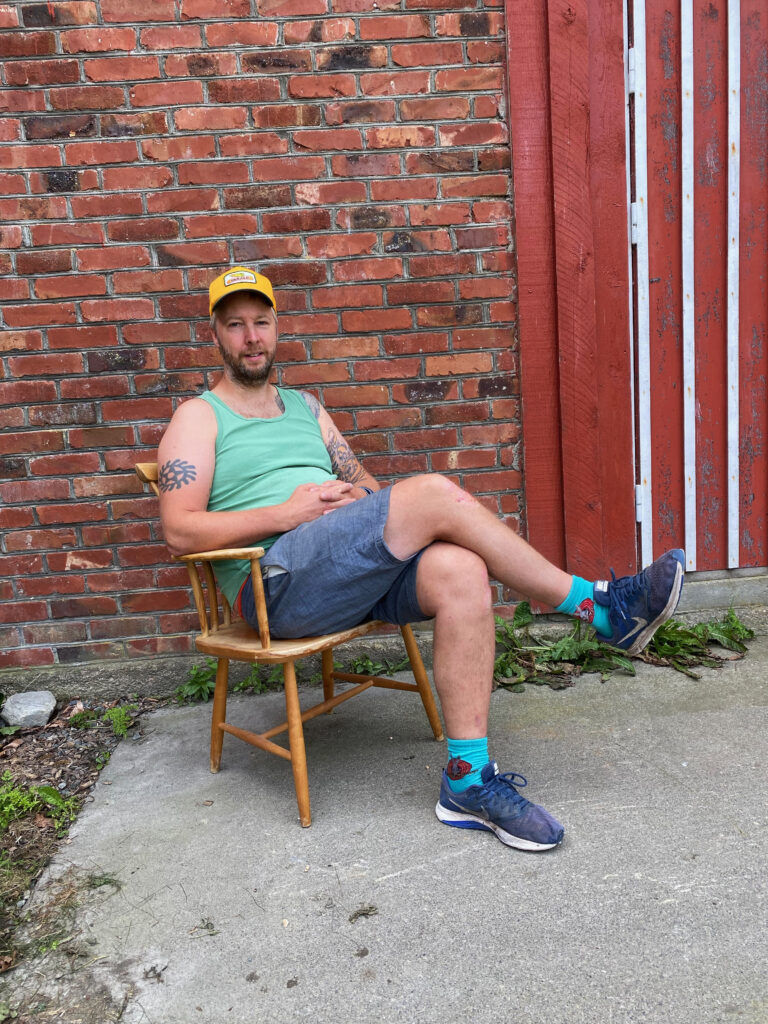

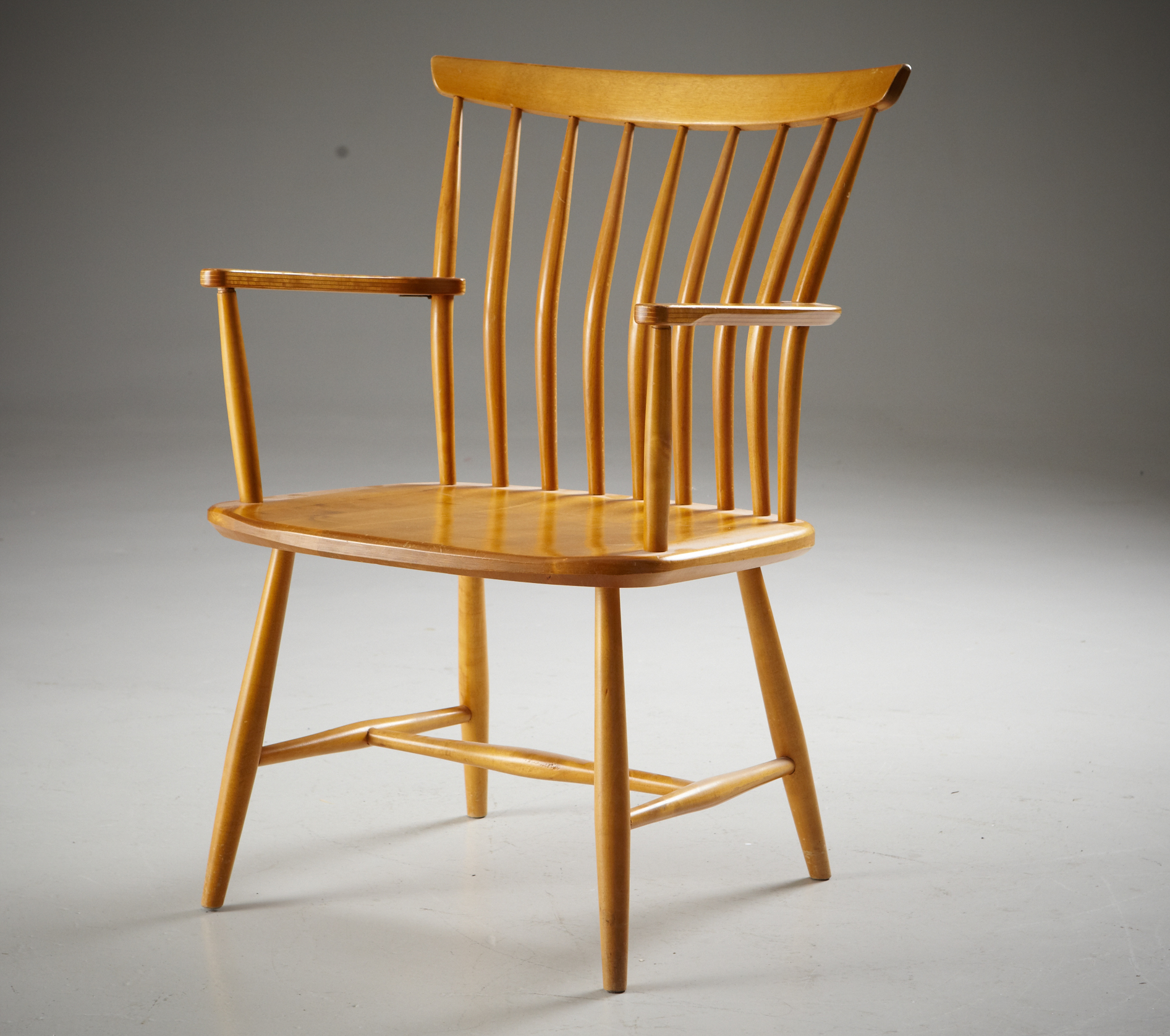
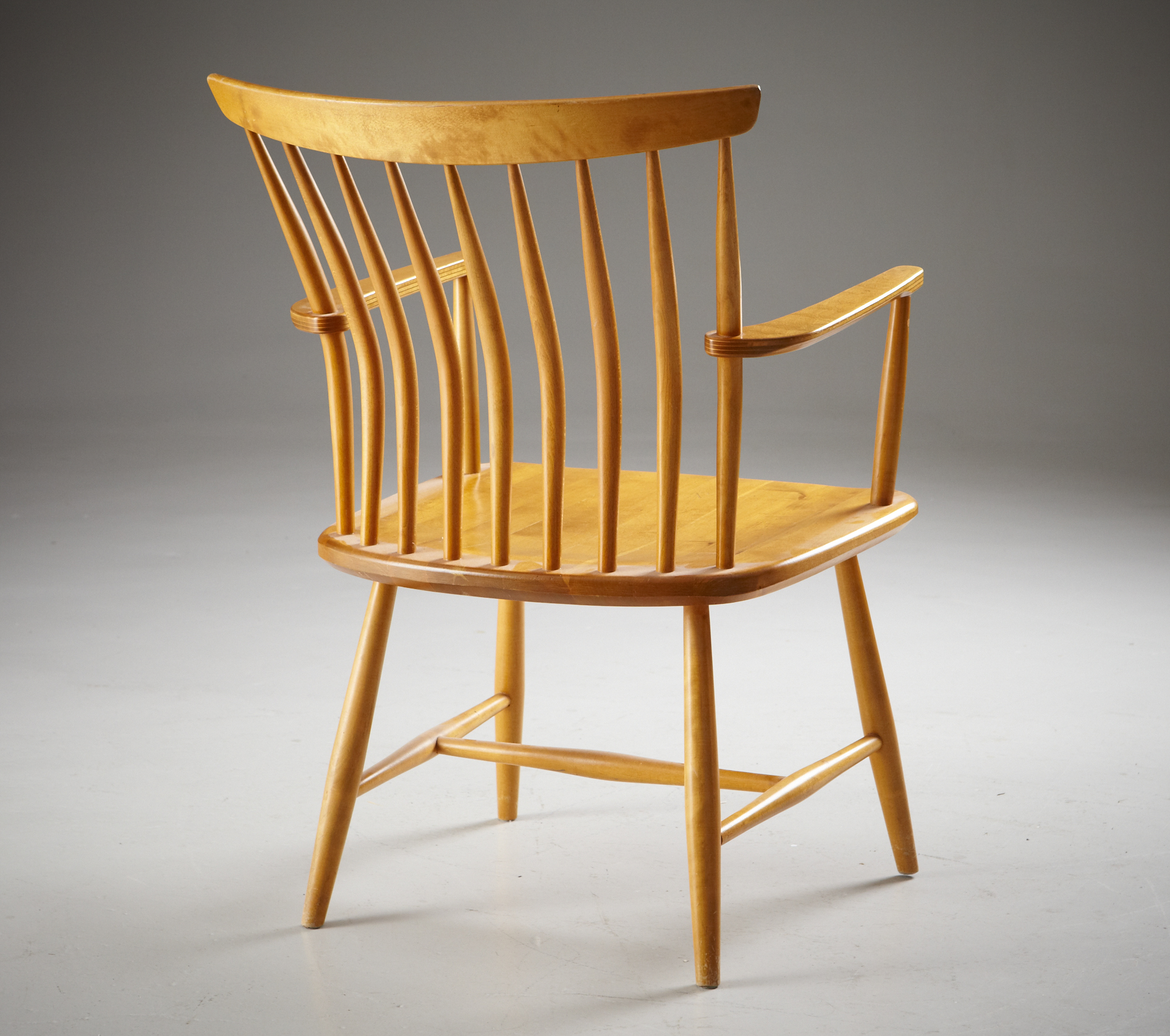
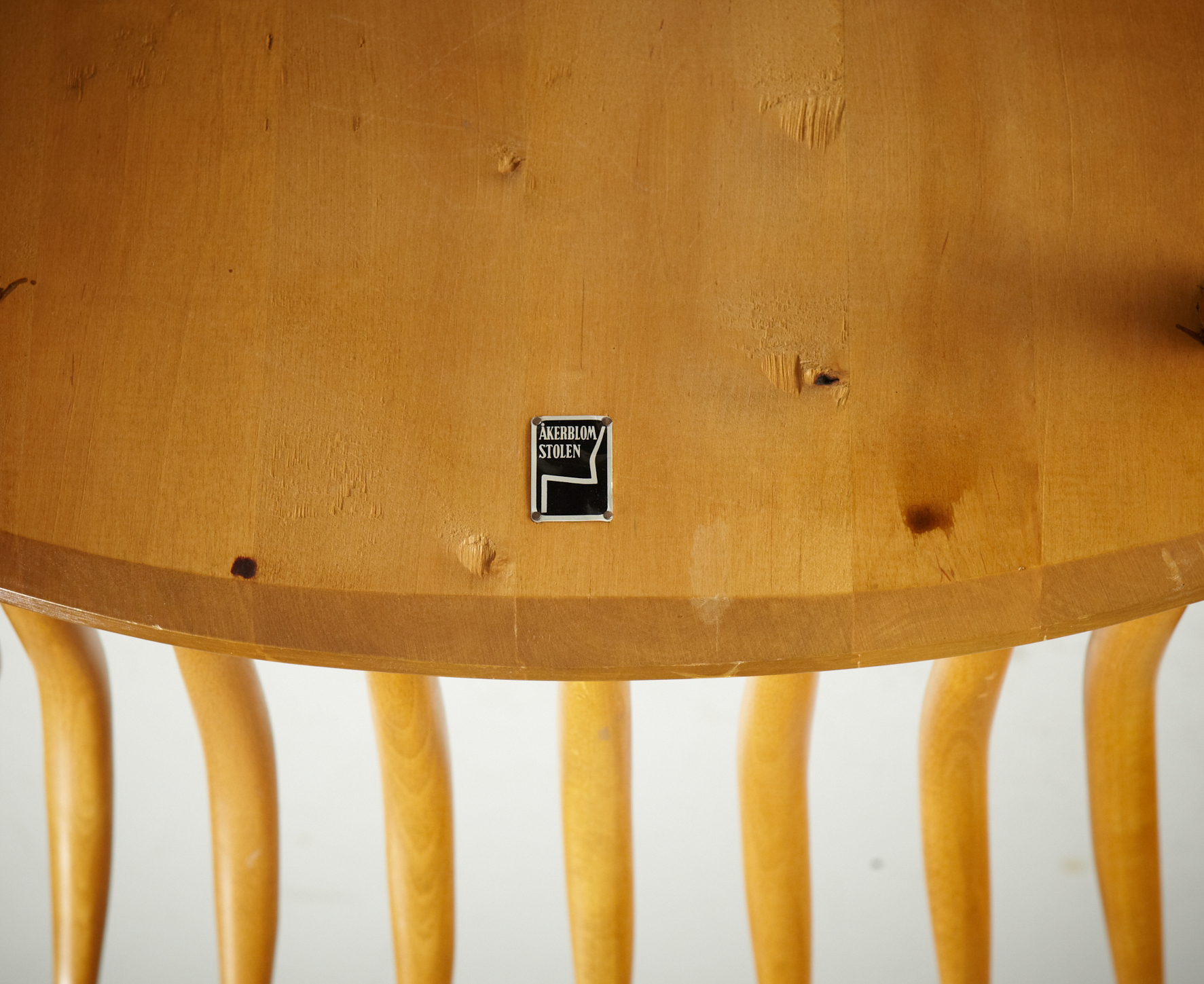
Klaus you forgot lutefisk
I never forget lutefisk! I love it!
Thanks for this article. The lumbar support is always a guesstimate for me. This will help.
Norway is also known for beautiful unspoiled coastlines.
Believe me when I say that Klaus just spoiled them. You should see what he just did do a pile of pebbles
I don’t think that video should ever be made public..
Didn’t the paper clip come from Norway? That’s what I was told when I lived there. I have a memory of a giant paper clip sculpture outside Oslo rådhus. I was also told a Norwegian invented the milk carton.
Hey, Steve! Sure thing, we’re SO proud of the paper clip. And the cheese plane, the spray can and the nitrogen fertilizer! When it comes to the milk carton, we like to believe that we invented it. And so does the Swedes. There’s been a huge lawsuit and a lot of discussion and I’m actually not sure of the outcome. Very cool that you’ve been outside Oslo Rådhus and that you even spell it correctly in Norwegian! Impressive! I actually had to Google the paper clip statue and it seems you’re right! Although it has been moved now to another part of town.
How could I forget the cheese plane?!? I still use the one we brought home from Norway in 1996.
Amazing! This make me truly happy to hear.
Great article! How do the dimensions of this chair fare with tall and short people. I’m built like Chris–6’2″ (that’s 4 feet 26 inches for all you metric folks) and my wife is about 5’6″. The chairs she likes sitting in, I hate and vice versa. In most chairs I find the lumbar and headrest to be in completely the wrong place for me.
Thanks! Well, Chris is just a tad taller than me. I’m 186 cm, which translates to 6’1″. You can see me sitting in it in the last photo in this article. The chairs is so low that it almost looks like I’m seated in a child’s chair, but I assure you it was really comfortable. Many factory made chairs are not at all comfy, so this one was a surprise. I’m not sure how it would be for someone shorter, like your wife. You would have to find one and try! They often show up at online auctions! Or build one!
Excellent article! The information on the study of the relationship between the human body, and the chair I found very interesting, great photo’s also. I’m Swedish so I understand the frustration, a family Doctor was Finnish, he once said “you can always tell a Swede, you just can’t tell ’em much” Stubborn Swedes! Well now I’m going to look for a copy of the book to read more. Thank you again!
Thanks so much, Scott! I agree, Åkerblom’s studies were real interesting. Not that anyone haven’t thought about these things before, most chairmakers take all of these aspects into consideration, but he really put them to the test and gave them a scientific fundament. There’s also another interesting Swedish designer who dabbled in the same things. He must have known Åkerblom and Eklöf, but i couldn’t find any literature on it. His name was Gustaf Axel Berg and is considered to be “The Father of Swedish Modern”. He also did a lot of studies on ergonomics in relation to chairs and designed a lot of classics.
Very interesting article Mr. Skrudland !
Gunnar Eklöfs measured drawing is duly archived in the ‘Chris Chair Porn-folder’ for future reference.
And as a fellow Norwegian I must concede that our Swedish brothers are capable of great things indeed; my theory being that as they’ve been a steel-producing nation for so long (Svenska stålet biter ! / The Swedish Steel Bites !), they have had a great workshop-tradition out of which a truly impressive engineering know-how has grown. The amount of cutting edge military hardware they have developed is astounding for such a small nation, but then they are not called ‘the Germans of Scandinavia’ for nothing — capable of great brilliance, but perhaps a bit too rule-bound ? Where the Germans would say “Ordnung muss sein!” the Swedes harp on about “ordning och reda” (“there must be order ! ” & “order and neatness” respectively). Full disclosure: I keep a nazi-like level of order in my own workshop – I consider it a benefit of being on the autistic / OCD spectrum – you will never hear me making a fool of myself by bumbling about asking “have you seen my pencil ?”. I know exactly where all my different kinds of pencils are, and who in their right mind would want to share a work shop with a pencil-nazi ?
Here’s a Sweedish anecdote for ya: Once in another lifetime I was over in Sweeden for my brother’s wedding. At the end of the day I was pretty sozzled and went for a walk to get some fresh night air and have a look around. This was in the flat-as-a-pancake-part of rural Sweden, in high summer when the sun just dips below the horizon at night so it’s never really dark and the air smells of linden trees and ripening wheat. I got to a two lane road with a zebra crossing and traffic lights. Dead straight road, you could see for a mile in each direction and no traffic at all – in the dead of night, in the sticks, remember ? There I find a young man patiently waiting for the lights to turn green. A true Swede, godbless’im.
And just before I go : Swedish music – so much more than ABBA (genius level pop music that it is) : C.M. Bellman ! E.Taube ! Åkerström ! Wreeswijk ! Jussi Björling ! Kent ! Bob Hund ! Jan Johansson !
music bonus :
https://www.youtube.com/watch?v=kXPPMYyJl-g
Thanks a lot for your comment, Paulsen! I truly appreciate it! And I laughed out loud at the anecdote. And thanks for the music tips. I was writing for a mainly American audience, so I thought it would be best to just leave it at Abba. But between you and me, I’m a huge fan of Swedish music and I know all the ones you mention. And more. And more. And more. And I have them all on vinyl!
Well done (including your socks)!
Thank you SO much! And I’m glad you liked my socks. They are my second favorite pair of socks after my pair of pizza socks.
This is my favorite Norwegian joke told to me by a Swede:
Do you know why they bury Norwegians 10 feet deep rather than 6 feet deep?
Because deep down Norwegians are really good people!
Haha! Here’s my favorite Swedish joke:
Some Swedes were ice fishing on a lake and didn’t get anything. They looked over at the Norwegians further out on the ice. The Norwegians were getting a lot of fish. So one of the Swedes said to another: Hey, why don’t you sneak over there and spy on them to see how they’re doing it! And so he did. After a while the Swede reported back to the others: “They’ve drilled a hole in the ice!”
Very good article and well illustrated! Even though the chair was designed in a very scientific way, and that it is a bit square, I find that it has some organic unity that make it look good.
I truly agree, Pascal. There’s a huge tradition of stick chairs in Sweden. And some here in Norway too. However, they usually make me yawn. So many of them, even those considered classics, I often find soulless and bleak copies/versions of traditional Windsors.This one however, tickled me in the right places. It looks factory made for sure, but it’s got personality. The low seat and the kinked back sticks also make it stand out from the rest of the bunch. It’s a very daring, yet complete design, I think. Or organic, as you say. Glad you like it!
Excellent article, sir Klaus. I am curious. If you were to build this chair, What if anything would you do differently. Or would you start by building somewhat of a copy?
Thank you, Jeremy! Once I saw it, I wanted to build a version of it. Not that the chair ain’t good as it is, but I’d probably add some personal tweaks to it. The back was super comfortable, so I wouldn’t change that. And after all, it wouldn’t be the same chair without it. I’d probably go for a slab seat instead of a laminated (just because I have slabs!) and add a bit more splay. I wouldn’t add more sticks – I really love the use of negative space between the single short sticks and the back sticks. And although I didn’t point it out in this article (I did on my instagram @stick_chair_encounters if you wanna see), the arm joint to the back sticks is done in a very factory-ish way here, with a bolt and a screw. I would just use the traditional joint where the back of the arm is wedged onto the tapering sticks.
Looney tunes chair?
Thanks for your post, the Akerblom Chairs are so beautiful!
They sure are! Thank you!
Fantastic post! I can’t wait to study the specs of the chair in more detail.
Thanks so much, Kyle! That is much appreciated!
Hi Klaus,
No one mentioned the hat. I have one myself. I worked at Dekalb Ag Research in the 70’s, where the company and hat originated. I went to college at Northern Illinois University, located in.. where else- Dekalb Il, about 60 miles west of Chicago. How did you acquire your iconic chapeau?
Proff artikkel!! Bør kanskje bytte ut kontorstolen..
Great article – I hope you had some use of the link I provided. And I guess we’ll always have a bit of a friendly sort-of-competition going between us swedes and you lusekofte-norwegians, eh?
One thing that you have is really a much better grasp of preserving traditional crafts, I think (like NTNU having a bachelors’ degree in traditional building crafts).